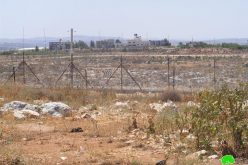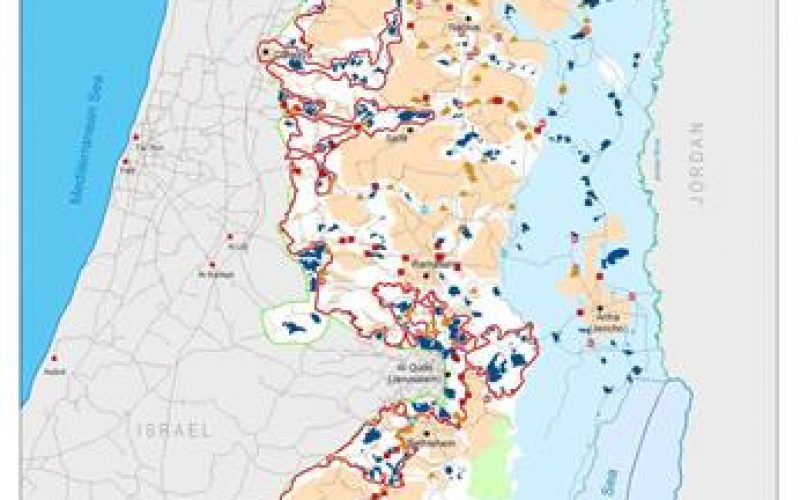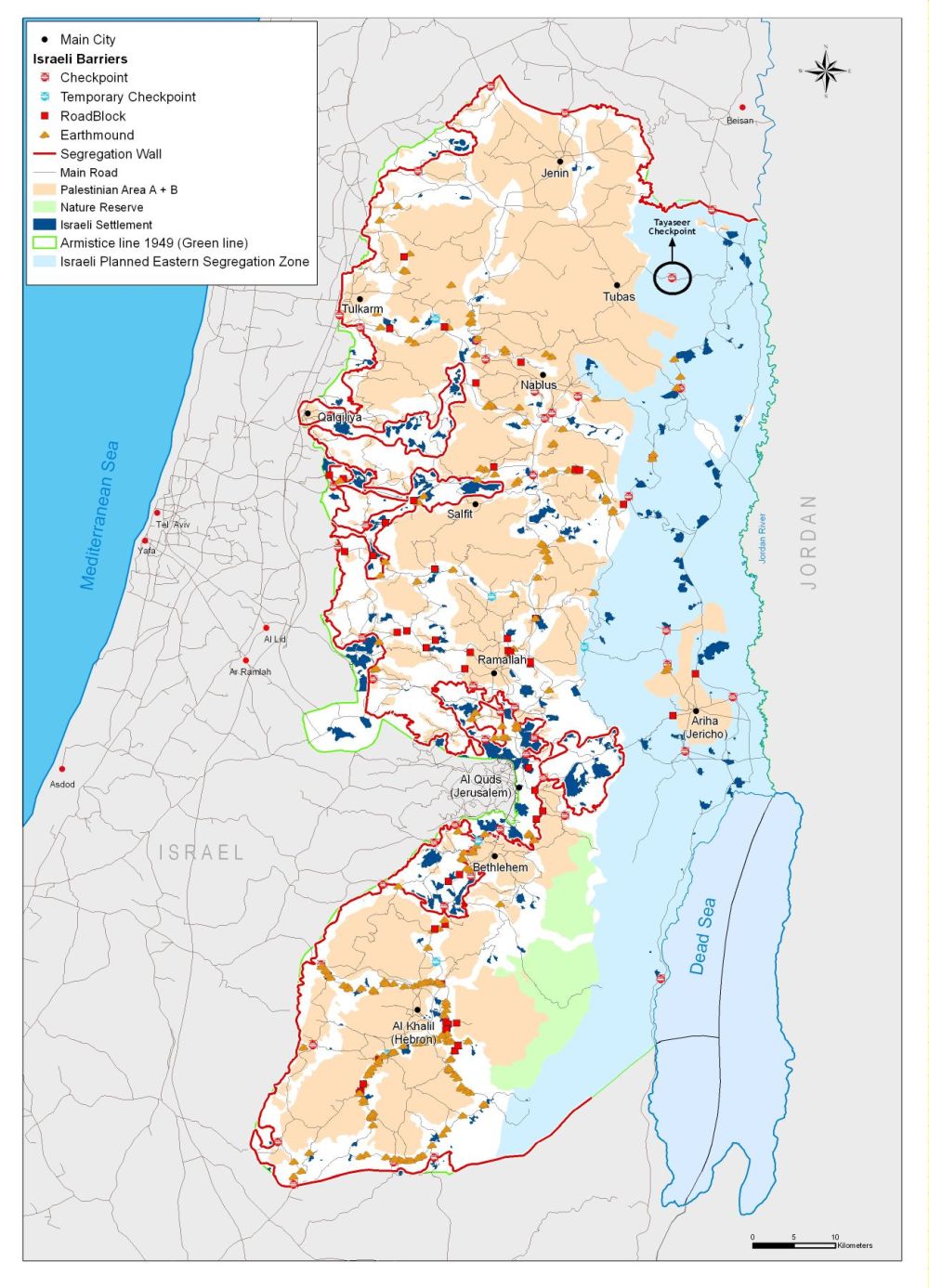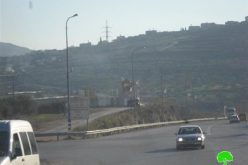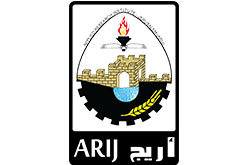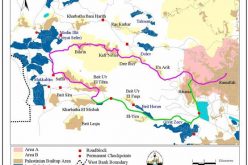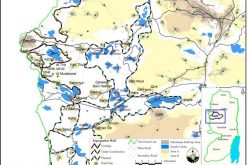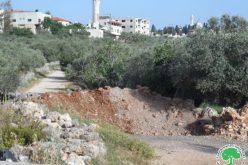On December 19, 2006 the Israeli Occupation Army commenced constructions at Tayaseer checkpoint located to the east of Tubas city with an aim to upgrade the level of security and turn the checkpoint from its current status into a crossing border point.
Tayaseer Checkpoint
Tayaseer checkpoint is 5 kilometers to the southeast of Tubas City. The checkpoint was set up following the eruption of the second Intifada in September 2000 to restrict Palestinians’ mobility in and out of the Eastern Zone area (the Jordan Valley). New procedures regulated the Palestinian movement to the Jordan valley area, of which that they had to prove their residency to the locality of their destination otherwise any person, Palestinian in specific has to have an Israeli issued permit from the Israeli civil administration in order to access the Jordan valley area.
The construction work carried out on Tayaseer checkpoint is significant in every scale, as the expansion of the checkpoint is coursed to the north and south of the existing location and reinforced with concrete blocks, iron gates and several lanes for pedestrians, cars and trucks. Moving agricultural products through the checkpoint is an aggravating procedure for the farmers who are forced by the Israeli Army to unload the cargo for inspection and then reload it again, during which the agricultural products are damaged or as in, many cases are ruined completely.
Tayaseer checkpoint was originally inaugurated several years ago, about the time when the construction of the western Segregation Wall began back in 2002. however, Tayaseer checkpoint is considered one of dozens checkpoints Israel planning to install (many of which already exist and operational) along the Jordan valley area in order to establish the eastern Segregation Zone, which according to the Israeli plan will be cut out from the West Bank territory and from any peace settlement with the Palestinians in the future. The following table shows the checkpoints that control the access of Palestinians into and out of Tubas Governorate.
Table 1: Israeli Checkpoints in Tubas Governorate
|
Checkpoint |
Type |
Location |
|
Tayaseer military base and check point.
|
Checkpoint
|
Located East of Tubas City and is considered as one of the main arteries that connects the Jordan Valley with Tubas and the northern Governorates.
|
|
Bisan (Hasam Tzahub) Commercial Crossing |
Crossing Border |
Upper Jordan Valley |
|
Road Gate 1 |
Road Gate |
At Kardala and Kherbit Tel Al Himma Junction |
|
Road Gate 2 |
At Roi' Junction |
|
|
Road Gate 3 |
At Baqa'ot Junction |
|
|
Trench |
Trench |
Extends 4.9 km on lands of Tubas Governorate from the lands of Kherbit Humsa, and moves southward parallel to Bypass # 578 and end at Baqa'ot settlement in the south. |
Source: ARIJ -GIS Database 2006
Impact ofcheckpoints on Palestinians' daily life
By establishing checkpoints in and around Tubas governorate, Israel will have full control over the area and will separate it from the rest of the West Bank. Therefore, the checkpoint has imposed a series of restrictions on Palestinian residents trying to access them. More than that the checkpoints has political aim, which is to evacuate the Jordan valley area from its Palestinian inhabitant, by making it unbearable for them to continue accessing the checkpoints with such hassle and to make it unfeasible to continue cultivating the land since much of their crops will be partially damaged or completely damage due to the Israeli adopted procedures at the checkpoints, all of which aiming to drive the Palestinians to voluntarily leave the Jordan valley area. The impacts of the checkpoints are exemplified, but not limited to the following:
1. Separating Tubas from the Jordan Valley.
2. Causing delay to people accessing the checkpoint on a daily bases: students, workers, farmers, medical staff, etc and sometimes many of them are sent back.
3. Inaccessibility to farmlands, workplaces and educational centers.
4. Hindering the cultivated products from and to the Jordan Valley area.
5. Inhumane practices such as physical harassment.
6. Increasing the feeling of depression and frustration amongst Palestinians.
Checkpointsand the Eastern Segregation Zone
In 2004, the Israeli Prime Minister Sharon declared that Israel is not planning to build a Wall along the eastern border of the West bank, however, a segregation zone will be established there. The eastern Segregation zone as it came to be known will include the entire Jordan valley and much more, some 1664 Km square, including 43 Israeli settlements accommodating just under 12000 Israeli settlers and 42 Palestinian communities with more than 52000 Palestinian inhabitants. The targeted zone will come under Israeli control through established and controlled checkpoints (25 is the number projected) and other forms of obstructions along the stretch of the zone, where stringent procedures are adopted to control Palestinian movement in and out of the Eastern Zone. In addition to Tayaseer checkpoint, other known ones are: Al Hamra checkpoint, Ma`ale Efrayme checkpoint, DCO checkpoint, Al Auja checkpoint and Beit Ha`arava checkpoint. The following table shows the Israeli checkpoints and obstructions in the Eastern Zone. See Table 2
|
Table 2: Checkpoints and Obstructions in the Eastern Zone
|
|
|
Type |
Number |
|
Earth mound |
6 |
|
Flying checkpoint |
2 |
|
Iron gate |
2 |
|
Permanent checkpoint |
8 |
|
Roadblock |
7 |
|
Total |
25 |
Checkpoints and International Status
International human rights principles stand explicitly against practices committed by Israeli soldiers at checkpoints and against the idea itself to restrict and confine the freedom of movement of individuals as the status in the occupied Palestinian territory. These checkpoints violate the right to freedom of movement as referred to in Article 12 of the International Covenant on Civil and Political Rights (ICCPR) which states that ''Everyone lawfully within the territory of a State shall, within that territory, have the right to liberty of movement and freedom to choose his residence.' Furthermore, these checkpoints violate many basic human rights as codified in the Fourth Geneva Convention of 1949, of which, the right to education (Article 50), healthcare (Article 56), work and others, which are all compromised by the Israeli checkpoints. The Convention also prohibits the occupying power from initiating 'violence to life and person' and 'outrages upon personal dignity, in particular humiliating and degrading treatment' (Article 3).
Prepared by
The Applied Research Institute – Jerusalem
ARIJ

Related Articles
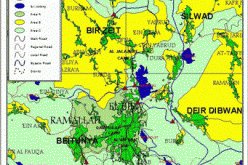
Isolation Policy Implemented By Israeli Army in the Occupied Territories … The Case of Ramallah and Al Bireh Districts
